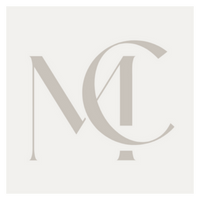Beyond coffee: the productivity toolbox
- Martina Cilia
- Aug 26
- 3 min read
In the fast-paced, hyper-connected world of modern work, staying organized, creative, and sane is no small feat – especially in the communications and public affairs field.
Externally, we need to tell clear, compelling stories that cut through the noise. Internally, we need to keep projects organized, track progress, and ensure nothing falls through the cracks.
So, between internal meetings, external campaigns, and global teams, I’ve learned to lean on a stack of tools that help me do more with less (and do it better). Whether you're in marketing, policy, operations, or just looking to work smarter, here are the productivity tools I absolutely swear by.

1. Asana – Where organization begins
Every great story starts with structure, and in the professional sphere, structure comes from well-managed workflows. Asana is a project management platform that keeps both the big picture and the smallest details in view. Whether using the calendar, list, or timeline modes, it makes it easy to assign tasks, set deadlines, and monitor progress across teams and time zones. For communications, policy, and operations teams alike, Asana is the foundation that ensures nothing gets lost in the shuffle and everyone knows what comes next.
2. Notion – The digital brain
If Asana is the engine that keeps work moving, Notion is the library and studio where ideas take shape. Its flexible structure allows teams to create content calendars, build knowledge hubs, document strategies, and collaborate seamlessly. It’s not just about organizing information but also about keeping creativity and clarity within reach. For cross-functional teams, Notion offers a single space where strategy, planning, and execution can co-exist.
3. AI writing assistants – From blank page to first draft
There’s nothing more daunting than a blank page when deadlines loom. AI writing tools – like ChatGPT, Gemini, Grammarly (to name just the basic ones) – are useful for breaking through creative blocks, drafting first versions of content, and rephrasing messages for different audiences or platforms. They are particularly effective for creating summaries of complex reports or brainstorming multiple headline variations in seconds.
Disclaimer: these tools are not designed for everything. They are not meant to handle confidential, sensitive, or embargoed information, as the data processing behind them often involves third-party servers. The most effective approach is to treat AI as a creative accelerator – a place to explore ideas and drafts – while final oversight, strategic tone, and factual precision remain firmly in human hands.
4. Canva – Visuals and presentations that work
Design is no longer just for designers. Canva has made it possible for anyone to create professional-grade visuals (whether for social campaigns, reports, or presentations). Its intuitive templates help build slides that don’t look like they’re stuck in 2007, and its expanding video capabilities make it a powerful tool for dynamic storytelling. For teams that need quick turnarounds without sacrificing quality, Canva delivers polished, on-brand content with minimal effort.
5. CapCut – Editing on the go
Video is one of the most effective storytelling formats, but it often feels too time-intensive for fast-moving campaigns. CapCut changes that. Its simple interface and powerful editing features are particularly useful when working “on the ground” at global conferences, events, or policy summits. Quick trims, auto-captions, and social-media-friendly formats allow teams to share compelling content in real-time, without waiting on post-production bottlenecks.
6. SimpleShow – Animation without complexity
Sometimes, explaining an idea requires more than text or static images. simpleshow offers a way to turn complex concepts into clear, animated explainers. This is particularly useful for policy updates, operational rollouts, or PR initiatives where simplifying information can make all the difference. With its user-friendly interface, even non-designers can create videos that inform and engage.
Final Thoughts
The best productivity tools are the ones that simplify your day – not add another layer of complexity or endless notifications. What works wonders for one person or team might feel like overkill for another, so don’t be afraid to experiment and tailor your stack to what actually helps you get things done.
[This article was originally published on LinkedIn].




Comments